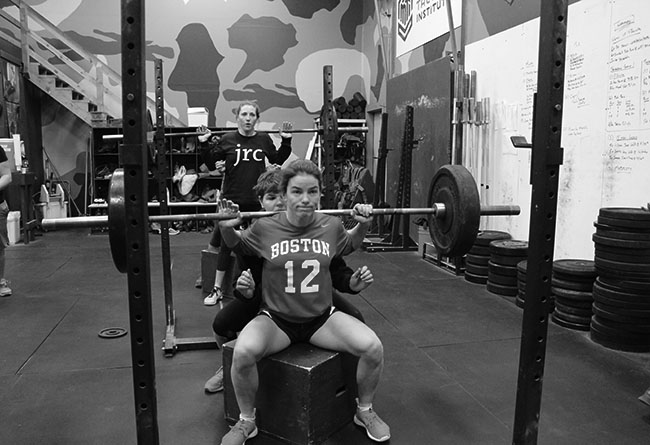
By Rob Shaul, Founder
Background & Study Design
In 2016 we conducted a “geek cycle” at MTI which tested two different set/rep schemes for increasing 1RM strength in female athletes.
Anecdotally, in coaching strength sessions with women over the years at MTI, I’ve seen that in general, women are hesitant to push 1RM efforts. There could be many reasons for this … (a) women could simply not be as interested in increasing strength as men; (b) women in general have less lifting experience, and are therefore more fearful of going heavy; (c) women have less lifting experience, and in general simply are not as familiar with barbell exercises and therefore are more hesitant to go heavy.
This mini-study addressed (b) and (c). We divided all our female lab rats, into two strength groups, Group 1 and Group 2, and conducted 1 Rep Max assessments on the Box Squat and Push Press.
Both groups completed a 6-weeks, percentage based strength progression, training these two exercises two times per week.
Group 1 trained heavy resistance (load) and low volume (reps).
Group 2 trained moderate resistance (load) and moderate volume (reps).
We re-assessed at week 3, reset the progressions, and then completed a final re-assessment week 6 (last week).
Based on our assumptions on why some women may be hesitant to push 1RM efforts from above, we hypothesized that the increased time under the barbell and therefore exercise experience for Group 2 would lead to a greater 1RM improvement amongst the female athletes in that group. Based on volume alone, Group 2 lab rats completed 3 times as many reps as Group 1.
See the different progressions below:


Results
Heavy loading and low volume showed greater strength improvement for our lab rats – opposite of what we hypothesized. See below:

Discussion/Next Steps
The small sample size for this study could limit its repeatability, but in general, I was somewhat surprised by the results. We can also see a significant difference between lower body (box squat) and upper body (push press) improvement in Group 1 – which is also surprising as the push press is a more technical lift and I would have expected more practice (reps) for Group 2 would have resulted in a greater strength gain.
Moving ahead, nothing in this mini-study suggests that women should be treated differently than men in max effort strength programming, where high intensity (heavy loading) and low volume (fewer reps) has proven the most effective for us and others over the years.
Questions, Comments, Feedback? Email rob@mtntactical.com
You Might Also Like Mini Study Results: Improving Heavy Rucking and Upper Body Pulling Strength in Females
